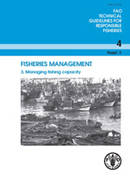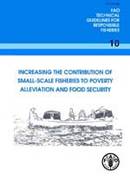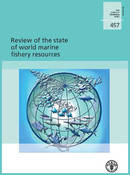出版物
Overcapacity is a key factor contributing to the decline in many of the world’s fisheries. The FAO International Plan of Action for the Management of Fishing Capacity (IPOA-Capacity) encourages States to address this problem through capacity management in order to align fishing capacity with the sustainable use of their fish stocks.The purpose of these Guidelines is to aid stakeholders and fisheries managers in the development of National and Regional Plans of Action for the Management...
These Technical Guidelines on Health management for responsible movement of live aquatic animals have been developed to support sections of FAO’s Code of Conduct for Responsible Fisheries (CCRF) addressing responsible fisheries management (Article 7), aquaculture development (Article 9), international trade (Article 11) and fisheries research (Article 12). The objective of these guidelines is to assist countries in reducing the risk of introduction and spread of serious transboundary aquatic animal diseases (TAADs). Although they deal primarily...
Due to the rapidly changing production processes in aquaculture worldwide (e.g. submergible cages, sea ranching, intensification, aquaponics and recirculation systems), which sometimes increase vulnerability to disease outbreaks and which generally require large investments from aquaculturists, over the last decades the demand for insurance to share and cover the risks involved has increased significantly within the aquaculture sector.
Risk management is increasingly gaining attention within the aquaculture sector, which is reflected in the development and increasing implementation...
The objectives of these Technical Guidelines are to provide a focus on small-scale fisheries and their current and potential role in contributing to poverty alleviation and food security by expanding on the guidance on small-scale fisheries offered by the Code. The Guidelines are complementary to existing Technical Guidelines for Responsible Fisheries.
Most small-scale fishers are in developing countries and many live in communities characterized by poverty and food insecurity. Small-scale fishing communities are faced with an...
The introductory chapters refer to the global situation and major trends of world marine capture fish production and the state of the world marine fishery resources. More detailed information is provided for each FAO statistical area, together with a discussion of the major trends and changes that have occurred with the main fishery resources exploited in each area and comments on the stock assessment work undertaken in support of fisheries management in each region. Special...






